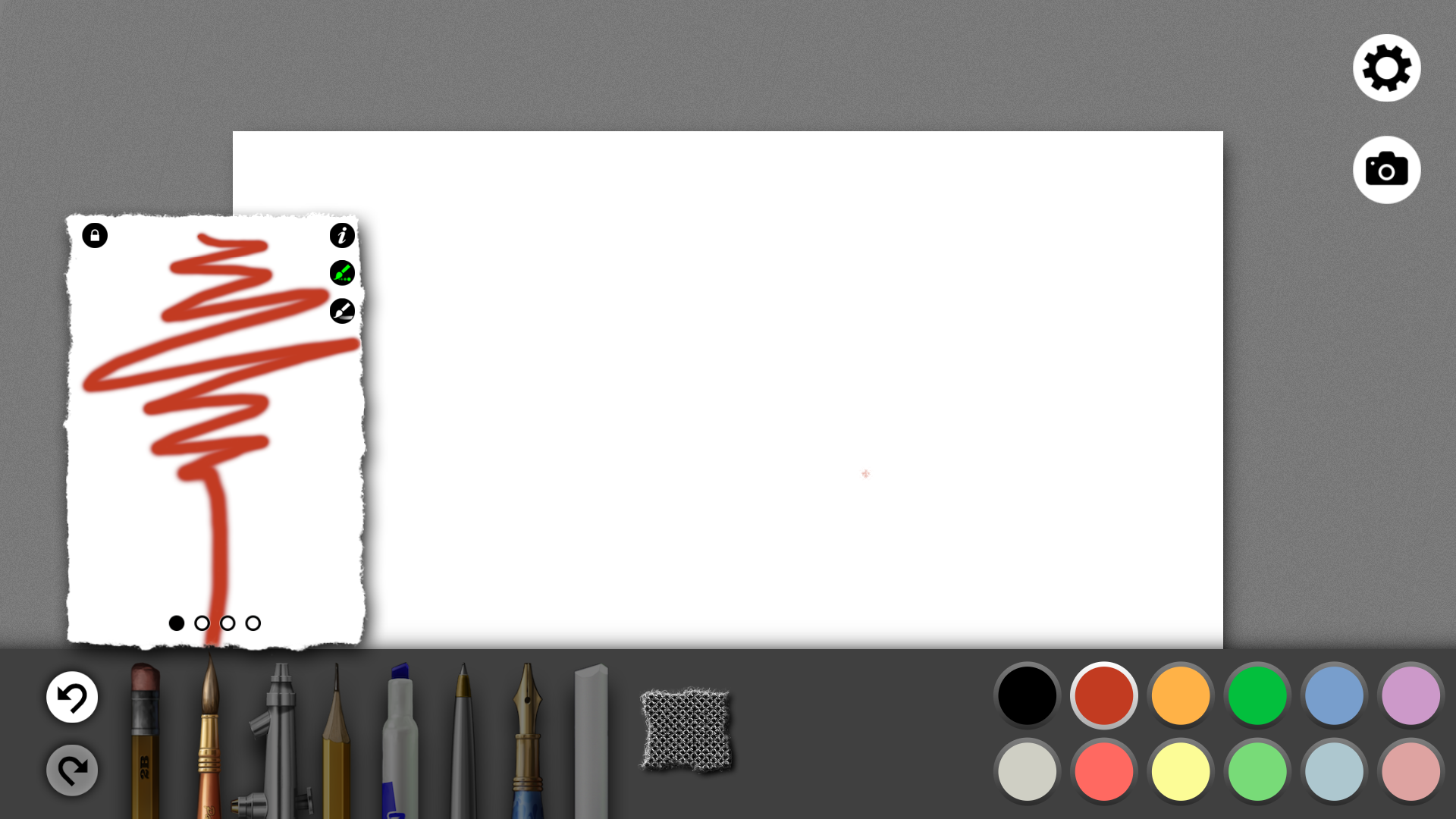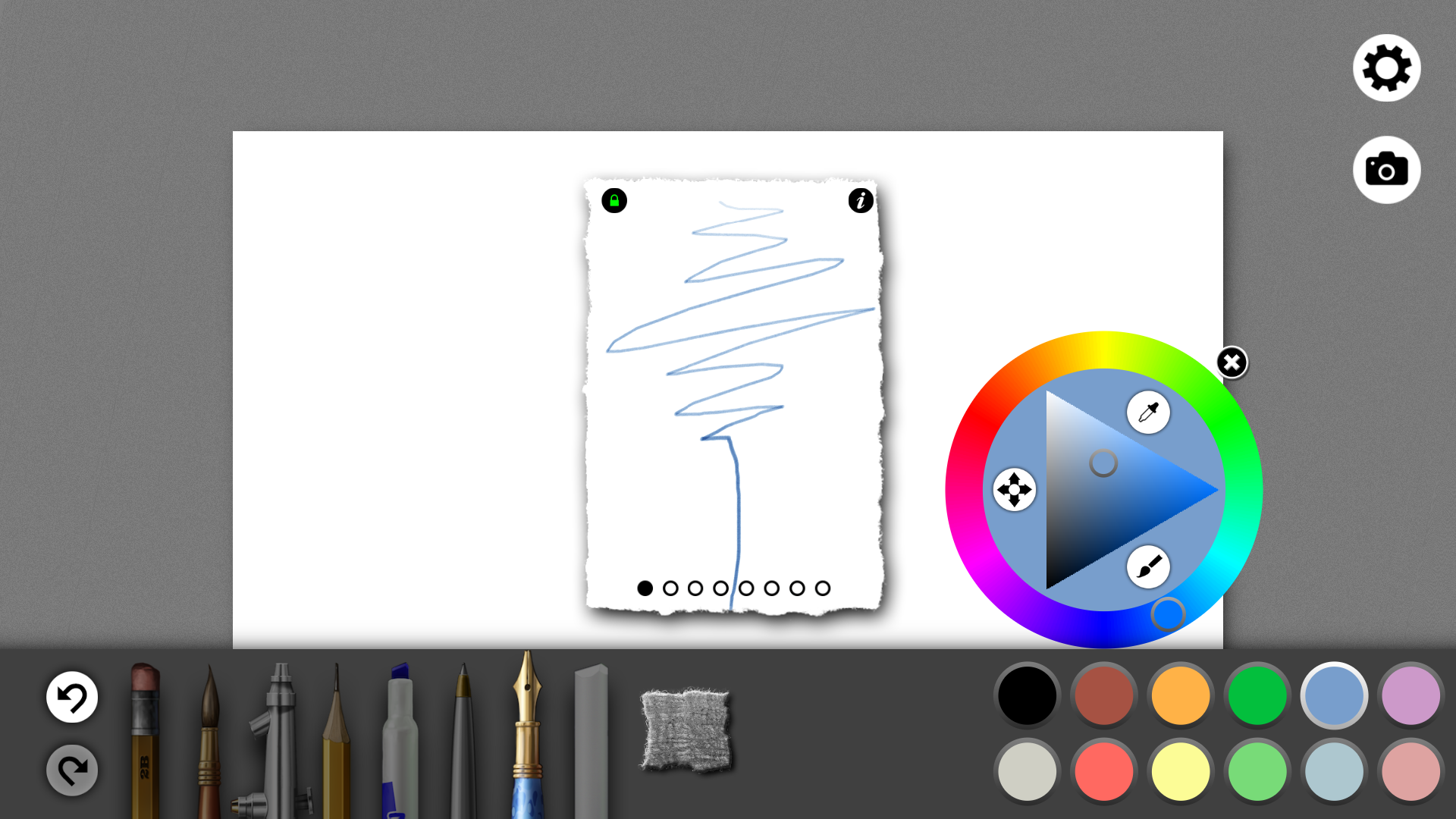Before I was hoarding Windows 8 tablets and convertibles, I was an insatiable iOS art app collector: always on the lookout for the application that would unlock the iPad's creative possibilities.
I know this is a silly pursuit because truly talented artists have been able to produce masterpieces on their iPads from day one. But those of us who never mastered finger painting like to convince ourselves that we would be better artists "if only" the hardware and software we used had feature x or y. And though I'd never used a Cintiq, I also knew that there had to be a better tablet drawing experience than the fat Q-tip feel of most of the iPad's early pens.
If you were paying attention to this space back in 2011, you may also remember reading about Microsoft's Courier project, which was a wholly unique take on the tablet form factor that was unceremoniously killed before getting to market. When some of the creatives behind the Courier resurfaced in early 2012 as iOS developer Fifty Three, their first product Paper for the iPad was accompanied by gushing press reviews. Seriously, just take a moment to contemplate the following quote from The Verge:
...the humanistic sensibilities that made the Courier so attractive are very much present in this app, unbound from the chains at Microsoft.
Ugh. Anyhow, I purchased Paper and found it to offer one of the more pleasant brush engines available on the iPad, though it was hindered by a strange sketchbook metaphor. Overall the app felt better suited to notetaking or doodling than serious drawing and I quickly set it aside (along with the iPad and a dozen or so other iOS art tools when the Surface Pro was finally released).
In Fifty Three's Paper for iPad, projects are organized as sketchbooks that each begin with ten blank pages.
The brush engine in Paper is one of the finest on the iPad, though it is limited by the lack of pressure sensitivity. The app is free, but each tool is a separate in-app purchase, so the final price is actually about $17.
When I was contacted by co-developer Ryan Harris of Silicon Benders to tell me about his recently released Windows 8 app Sketchable, I had to do a double take.
Sketchable is a virtual clone of Paper. The programs are so similar I had to ask Harris whether he or his developer brother were former employees of Fifty Three or Microsoft. (They aren't.) The brothers Harris are based in Northern Florida and enlisted the aid of industry veteran John Deery (co-founder of Painter) and artist Don Seegmiller during their 18-month development process.
Just like Paper, Sketchable uses a sketchbook metaphor. Each sketchbook defaults to ten pages, but you can easily add or delete pages as necessary. And also just like Paper, Sketchable is a free app, but each tool requires a separate in-app purchase. Although this model isn't ideal, it's hard to quibble since the all-in cost is only $11.99.
Where Sketchable stands out vs. Paper is beneath its simplistic surface. Nearly every feature is customizable. There are 13 standard sketchbook cover options (though curiously I wasn't able to add my own with the camera icon). Each tool (eraser, brush, airbrush, pencil, marker, pen, inking nib and chalk) comes with four presets which can be overwritten and expanded to eight. Double tapping on any tool brings up a long menu of options for stroke background, shape, diameter, roundness, feather, angle, spacing, scatter, stroke opacity, concentration, accumulation and more. There are also 18 standard paper textures, each with its own set of customization options.
Sketchable is clearly a pretty amazing application. But many potential users may be turned off by its similarity to Paper. My advice to the developers would be to branch out in a new direction stylistically so they won't be mistaken for mere copycats. All this effort shouldn't risk being dismissed at first glance.
A version for Windows RT was just released, making Sketchable one of the few "serious" art apps available for the Surface RT and Surface 2. However, in my experience, the coarse digitizer on the Surface RT made it very difficult to produce desirable results with any of the capacitive stylii I own, including the higher end Adonit Jot Pro or Wacom Bamboo. Most of my strokes had some degree of jitter and the RT often missed strokes. Users of the Surface 2 will have to tell me whether that device's digitizer fares any better.
The program runs extremely well on both the Surface Pro 1 and 2. It's great to see a pressure sensitive Windows Store app and I hope other developers follow suit. I didn't have a chance to test Sketchable on either of my N-Trig convertibles yet, but I assume they'll work correctly. I'll update this post if I find out otherwise.
Although I wish more of the power features were exposed in charms, the program is still extremely touch/tablet friendly and should definitely be considered by any Windows tablet user.
Each Sketchable project begins as a 10-page sketchbook. The are 18 default cover options currently available. The camera icon on my version is ghosted, but I assume the ability to customize covers is in the works.
Once inside a sketchbook, the UI is very simple. Settings and camera/picture load options are on the top right and tools, paper texture and color palette is on the bottom. The free version ships with only the eraser and brush. All other tools (including the color picker!) are sold seperately in-app. Total cost is $11.99
Double tapping on a tool brings up one of the presets. Most tools come with four presets but these can be modified or expanded by the user. Selecting the brush icons allows you to change the stroke interactively. The lock prevents further changes to the preset.
The info button brings up a long list of customization options. Shown above are just a few of the settings for the brush Diameter. Unfortunately because they're shown in this windowed format, going through all the settings requires a lot of scrolling. I also didn't like the value sliders. It's very difficult to dial in a precise number. Hopefully in future revisions, the developers can move some of these settings to Charms.
There are 18 standard paper textures, each with its own set of customization options.
Even the color picker is sold separately.






